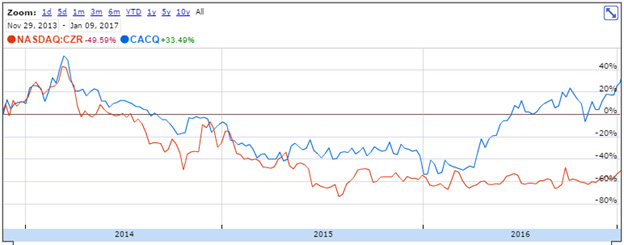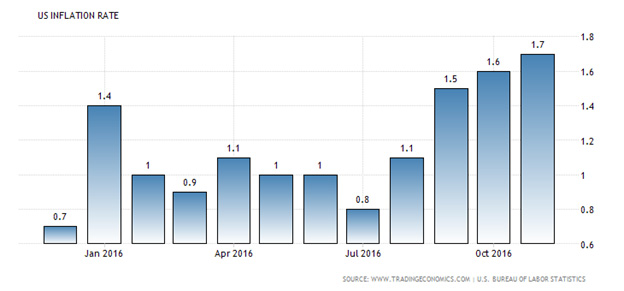And we wonder why our public courts are always clogged. Caesars’ bankruptcy festivities continue into the new year, with more posturing leading to a near collapse magically resolved at the last minute. According to Bloomberg, an accord was filed hours before the deadline in late December. Funny. This thing is like the private version of the Greek debt crisis, with prospects looking completely impossible followed by miraculous breakthrough after miraculous breakthrough. The lesson to be learned here is that private bankruptcies are always better, because those affected are only affected because they voluntarily chose to invest their capital in a venture that went bankrupt. Nobody else cares, nor should they. But with public bankruptcies, it’s taxpayers forced to invest in government all losing out, so everyone gets justifiably livid.
 In any case at this point it can probably be safely assumed that last minute saves will continue throughout the year. The next holdout is likely to be some fight with the U.S. Trustee, who opposes protections for Apollo and TPG, the two firms that wisely decided to embark on a highly leveraged buyout of Harrah’s on the brink of a global financial collapse. There will be some kind if last ditch fight with the Trustee that will get resolved at the last second and all will be well again.
In any case at this point it can probably be safely assumed that last minute saves will continue throughout the year. The next holdout is likely to be some fight with the U.S. Trustee, who opposes protections for Apollo and TPG, the two firms that wisely decided to embark on a highly leveraged buyout of Harrah’s on the brink of a global financial collapse. There will be some kind if last ditch fight with the Trustee that will get resolved at the last second and all will be well again.
The problem is that neither Caesars stock, CZR or Caesars Acquisition Company (CACQ), has any concrete fundamental value because the percentage ownership for each company is going to change for each group of equity holders after the restructuring is finally finished. There is no way to rationally invest in either one because the exact details of reorganizing this vast financial black hole are hidden from public view. But that doesn’t mean that no moves can be made by traders who can play the odds.
One thing is for sure, we will get a lot of volatility for both these stocks in 2017. If we look at a comparison chart for gauging relative volatilities, CACQ looks a lot more rollercoastery than CZR. So CACQ can be considered a leveraged play in CZR.

The best way to profit off the back and forth looks to be going long CZR with some leverage while shorting CACQ. CACQ already looks overbought anyway after reacting to the latest settlement in late December, and is nearing all time highs. But this doesn’t seem to make much fundamental sense because under the agreement finally hammered down, CACQ will become the “New CEC” and only 24% owned by current shareholders. The rest will be owned by bondholders. So we’re talking dilution here about to be unleashed in exchange for the extinguishment of $10.5 billion in debt. But the New CEC will still have about $7.5 billion in debt on its balance sheet at least. Under what terms? We don’t know exactly yet, and this is the problem. This doesn’t look like a great reason to celebrate, other than the court battles being one more step closer to being over. OK, but then what?
Going short CACQ makes sense together with going long CZR, because CZR shareholders will only own 6% of the New CEC, less exposure to the new entity. Stock price movements in CZR should generally follow CACQ, but should not be as extreme. Meaning, if you’re long CZR with some call option leverage but it’s going down, you should more than make up for that by being short CACQ. And if CACQ keeps rising, the right leverage on a CZR call option position will keep you even. If you play the numbers right, you can win in a best case scenario and more or less break even in a worst case scenario.
Even assuming everything gets cleared up this year and Caesars can finally return to status quo ante bellum 2008, there is still the risk of impeccably bad timing. We are now in the clear stages of a boom in the business cycle, and it could fall to bust beginning as early as June, depending on what growth rate the money supply is at that time. What got Caesars into this whole mess in the first place was bad timing with a leveraged buyout at the end of the last boom. The same could happen again. By that time Trump will have already launched a trade war with China and possibly OPEC, which will raise prices on oil and goods in the United States and add to the price inflation indexes already rising since July.

This will in turn cause the Federal Reserve to hike interest rates further. Couple that with a possible fall in money supply growth by June and it’s a recipe for stagflation – rising consumer prices and falling capital (including stock) prices. This would be quite bad for both CZR and CACQ.
The general point is that while US stocks like MGM and the other small cap US gaming stocks in the model portfolio are safe for now, everything will have to be reassessed month by month. It’s hard enough having to manage straightforward US gaming positions, but it’s impossible to manage a position in any Caesars equity unless you’re just playing the numbers in a hedging game. The safest thing to do though is to just stay away from anything that sounds vaguely Roman until at least the restructuring is absolutely finalized and we can all see the numbers in black and white.